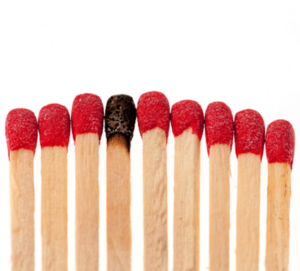Burnout is Real
Yes, burnout is real.
It’s an extremely destructive phenomenon that is the direct result of chronic imbalance. In fact, it has the power to upset both your work and your life. Once you reach this frazzled point of exhaustion, you have a long road to recovery.
We have an acquaintance named Marcia who used to run the human resources department of a large, fast-growing hospital. The massive size of her department required Marcia to work twelve-hour days on a regular basis. She was on the clock from the time she awoke to the time she fell asleep—often losing sleep to cram more work hours into her day.
We watched Marcia’s dynamism and brilliance slowly deteriorate as exhaustion from a life completely devoted to work took its toll. After six years of twelve-hour workdays, the reality of her imbalanced lifestyle became unbearable for Marcia. She couldn’t take her job a moment longer and had to quit. By that time quitting wasn’t a choice, it was a necessity—a necessity that arose through six long years of exhaustion and suffering.
Why subject yourself to the negativity of a burnout when it can be avoided? There are two particularly effective anti-burnout strategies:
- Awareness
- Action Â
It’s important to recognize burnout warning signs before exhaustion becomes chronic. You may have a distinct pattern of reactions that arise every time your schedule becomes unbalanced. Stress, irritability, irregular sleep patterns, and lagging energy are classic red flags. It doesn’t matter what your specific symptoms are; what’s important is that you recognize the telltale signs and take action to alleviate them.
If it’s impossible to reset your schedule right away—perhaps you’re in the middle of a large work project or launch—then create an action plan to be enacted at a specific date in the future. This ensures that the imbalance has an endpoint. It also provides you peace of mind in knowing that your current stress has an expiration date.
Varying your tasks and activities throughout the day is also integral to avoiding burnout. We take non-work breaks during the day, such as going to the gym, and we encourage our employees to do the same. We know our employees will be more productive on the clock if they take time to recharge their bodies and minds. These kinds of breaks are high-leverage activities that can bolster your entire operations. After taking breaks from behind the desk, employees return to the office alert, energized, and able to perform more effectively and efficiently. These breaks also promote happiness and positivity in the workspace—they’re great for company morale.
This article is an excerpt from the book “The Whiteboard: Go from Blank Canvas to a Productive, Leveraged, & Highly-Profitable Business†by Chris Haddon and Jason Balin. Please click here to see more.


Write a Comment